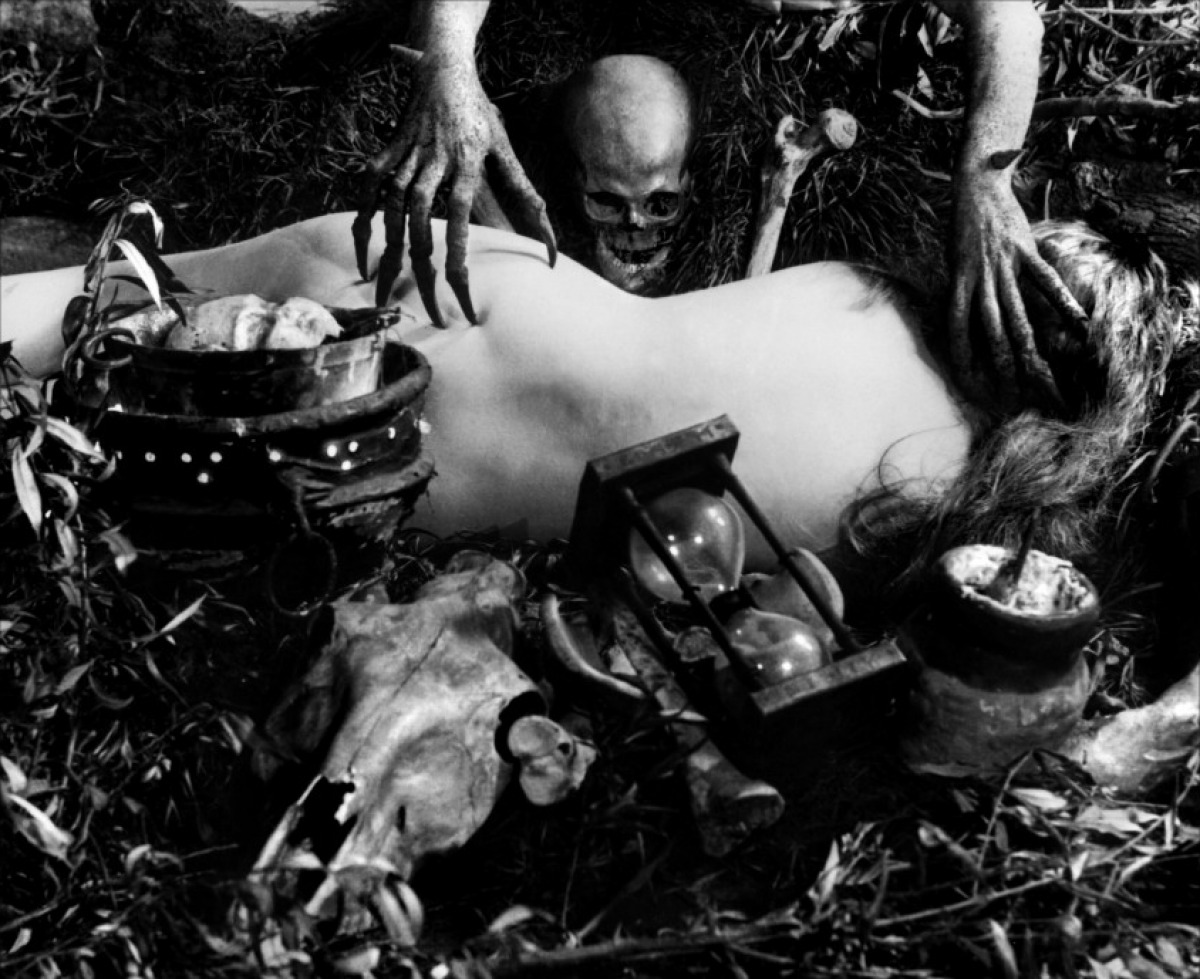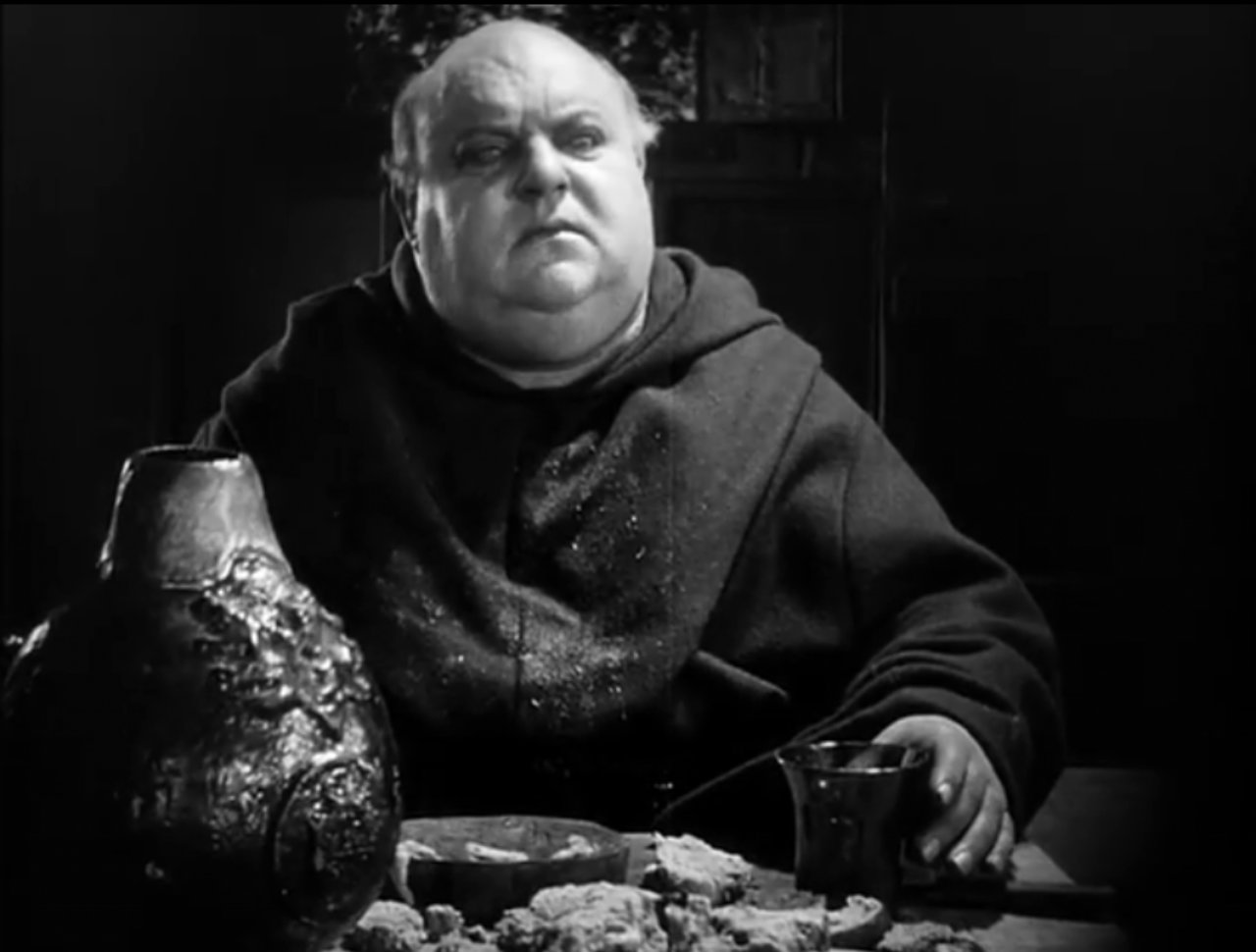A woman approaches a witch in her lair, hoping to score a potion to seduce a cleric. She imagines how this will play, and we watch her reverie: he puts down his knife and meat long enough to check her out. But it’s not nearly enough for her, even as a dream. So she asks the witch if she can get something stronger, which leads to a rape-fantasy, a sequence we also watch. Welcome to Häxan.

Benjamin Christensen’s 1922 opus — a career-defining and career-destroying endeavor, as all masterpieces should be — isn’t out to please. Häxan aims to confound. While it’s couched in a pedagogical narrative, like many early silents (I am looking at you, Diary of a Lost Girl and Within Our Gates), Häxan also traffics in exploitation. There is no grotesquerie Christensen isn’t almost giddily eager to put on the screen.
Wouldst thou like to live deliciously? Häxan would.
Released the same year as Murnau’s Nosferatu and Flaherty’s Nanook of the North, Häxan is an incredible blending of forms in early cinema, a kind of genre-fuckery that only seems more revolutionary in retrospect. There wasn’t any such thing as horror on the screen quite yet; the documentary is still recovering from Flaherty’s staginess. And yet, here is a Danish director, with some Swedish funds, blending the two.
We are never on even ground in Häxan. The movie is out to get us.

Häxan is broken up into seven chapters, each detailing “witchcraft through the ages,” as the subtitle of the profoundly unnecessary, but apparently quite popular, William S. Burroughs-narrated 1968 version would have it. (Hippies! What can’t they ruin.) Each focuses on Satanic iconography, social dis-ease, and patriarchy. We get the frightening, gross, and dickish close-ups that prefigure Dreyer’s The Passion of Joan of Arc, the kind of social mania that animates Eggers’ 2016 masterpiece The Witch, and depictions of tortures that pre-date the grimmest of body-horror flicks by roughly a century.
It’s a fascinating text that won’t go away. People seem to discover it year by year. For a long time, Häxan was known primarily as either the ’68 midnight-movie freakout it never should’ve been, or else the background staging for a metal show — an old beggar woman pleading for her life while dude’s presumably shouted about some distant devil. Ironically, the devil feels very close by in Häxan.
That figure was played by Christensen himself — all wagging tongue and naked ass — which raises the question: what does it mean when the director casts himself as Satan? At one point in Häxan, the film stops so that Christensen can tell us how one of his actresses wanted to try out the thumb-screw. At another point, a title card mentions the fact that the same old beggar woman, an actually homeless person he persuaded to participate in production, told him in no uncertain terms that the Devil is real.

We return to the original image. A woman appears in what appears to be a documentary about witchcraft, recreating the events described. Christensen then follows her into a dream, an imaginary world where her desire is played out. We come back only to be thrust back into an alternate telling of the same dream. When we arrive home again, we realize just how little we understand about the relations between these dreams, this reality, and the image on the screen.
Häxan is furiously intent on dissolving any notion of perspectival wholeness. We just get tossed about, hoping for a lifeboat or some sort of stable structure. None will be forthcoming. It’s a documentary about horror, a horror film about how documentaries will never tell the truth, and a truthful rendering of our engagement with the fraught image.
In other words, it’s a movie. A really good one.
I spoke with Pete and Aaron of the We Love To Watch podcast about this film, and an episode will be forthcoming. In the mean time, maybe check out our discussion of Nosferatu, a film I discussed, released the same year.

